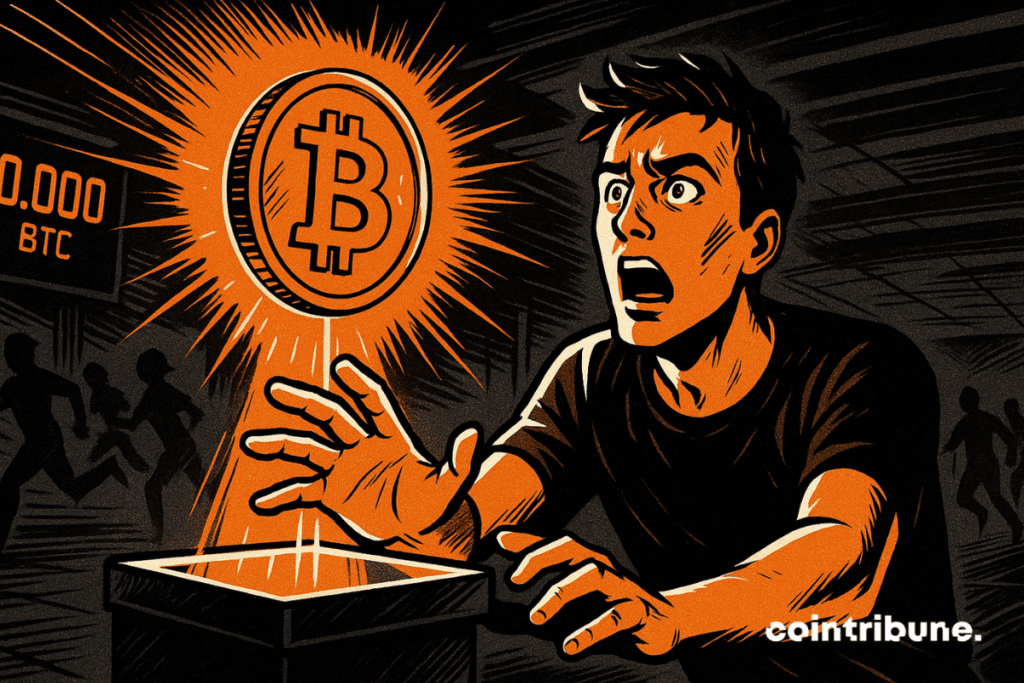Bitcoin May Face Structural Liquidity Collapse
The most underestimated risk of bitcoin may no longer be its volatility, but its gradual disappearance from the market. A new report from Fidelity Digital Assets warns of an increasingly marked dynamic: a growing share of the BTC stock is accumulating in inactive or institutional wallets, permanently escaping liquidity. By 2032, this concentration could reach a historic threshold, redefining the available supply and market balances.

In Brief
- Fidelity anticipates that about 8.3 million bitcoins could become illiquid by 2032, representing nearly 42 % of the circulating supply.
- This projection is based on the continuous accumulation of BTC by two major groups: long-term holders and publicly listed companies holding over 1,000 BTC.
- Currently, these two groups already hold over 969,000 BTC and could control more than 6 million by the end of this year.
- The growing concentration of BTC in a limited number of hands raises concerns about an imbalance between programmed scarcity and risk of sudden liquidations.
A Supply Under Pressure: 8.3 Million BTC Soon Off-Market?
While bitcoin is progressing, Fidelity Digital Assets announces in a report published this Monday that 8.3 million BTC could become “illiquid” by the second quarter of 2032, representing about 42 % of the total circulating supply.
This projection is based on observing constant accumulation behaviors from two groups considered strategic. On one hand, long-term holders, whose wallets have remained inactive for at least seven years. On the other hand, publicly listed companies each holding a minimum of 1,000 BTC.
The report specified : “we estimate that this combined group will hold more than six million bitcoins by the end of this year, representing more than 28 % of the 21 million bitcoins that will ever exist”.
Fidelity details its methodology: only addresses whose holdings increased each quarter, or in at least 90 % of cases over the past four years, were taken into account. Here are the important figures :
- Long-term holders have never reduced their BTC stock since 2016 ;
- Publicly listed companies experienced only one period of net reduction of their holdings: the second quarter of 2022 ;
- Currently, 105 public companies hold a total of 969,000 BTC, or 4.61 % of the total supply ;
- Fidelity estimates that, by the end of this year, these two groups will cumulatively hold over 6 million BTC ;
- The projection of 8.3 million illiquid BTC in 2032 does not even account for potential new buying companies.
These elements highlight a persistent accumulation dynamic, deeply rooted in the institutional and wealth-holding behaviors of the market. The concentration of supply is increasing, resulting in a scenario where the real availability of BTC in circulation could become marginal, with potentially significant effects on volatility and valuation.
A Market Under Pressure Facing an Increasingly Frozen Supply
If the projected illiquidity by 2032 raises the question of an increasingly rare bitcoin, it also raises a more pressing one: what will happen if these large holders decide to sell?
The Fidelity report reveals a striking contrast between accumulation on one side and massive sales on the other. It notes that the two identified groups now hold $628 billion in BTC, at an average price of $107,700.
This doubling valuation in one year could encourage some to secure their profits. Indeed, whales have sold nearly $12.7 billion of BTC in the past 30 days, representing the largest sell-off wave since mid-2022.
In this context, the growing concentration of BTC in a few hands becomes a volatility factor. The market, already marked by a 2 % drop in the asset price in a month, shows some vulnerability to these fund movements.
Fidelity points out that if long-term holders maintain their position, the bullish trend could be strengthened. However, even a partial strategy reversal could cause a correction.
Behind the figures, an unprecedented configuration of the bitcoin market is thus emerging. A structurally reduced supply could mechanically drive up the BTC price, provided demand follows. Otherwise, extreme concentration could generate increased volatility, even systemic instability.
Maximize your Cointribune experience with our "Read to Earn" program! For every article you read, earn points and access exclusive rewards. Sign up now and start earning benefits.
Diplômé de Sciences Po Toulouse et titulaire d'une certification consultant blockchain délivrée par Alyra, j'ai rejoint l'aventure Cointribune en 2019. Convaincu du potentiel de la blockchain pour transformer de nombreux secteurs de l'économie, j'ai pris l'engagement de sensibiliser et d'informer le grand public sur cet écosystème en constante évolution. Mon objectif est de permettre à chacun de mieux comprendre la blockchain et de saisir les opportunités qu'elle offre. Je m'efforce chaque jour de fournir une analyse objective de l'actualité, de décrypter les tendances du marché, de relayer les dernières innovations technologiques et de mettre en perspective les enjeux économiques et sociétaux de cette révolution en marche.
The views, thoughts, and opinions expressed in this article belong solely to the author, and should not be taken as investment advice. Do your own research before taking any investment decisions.